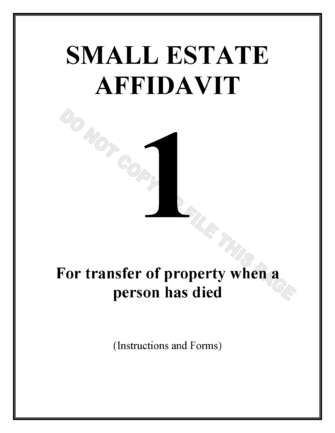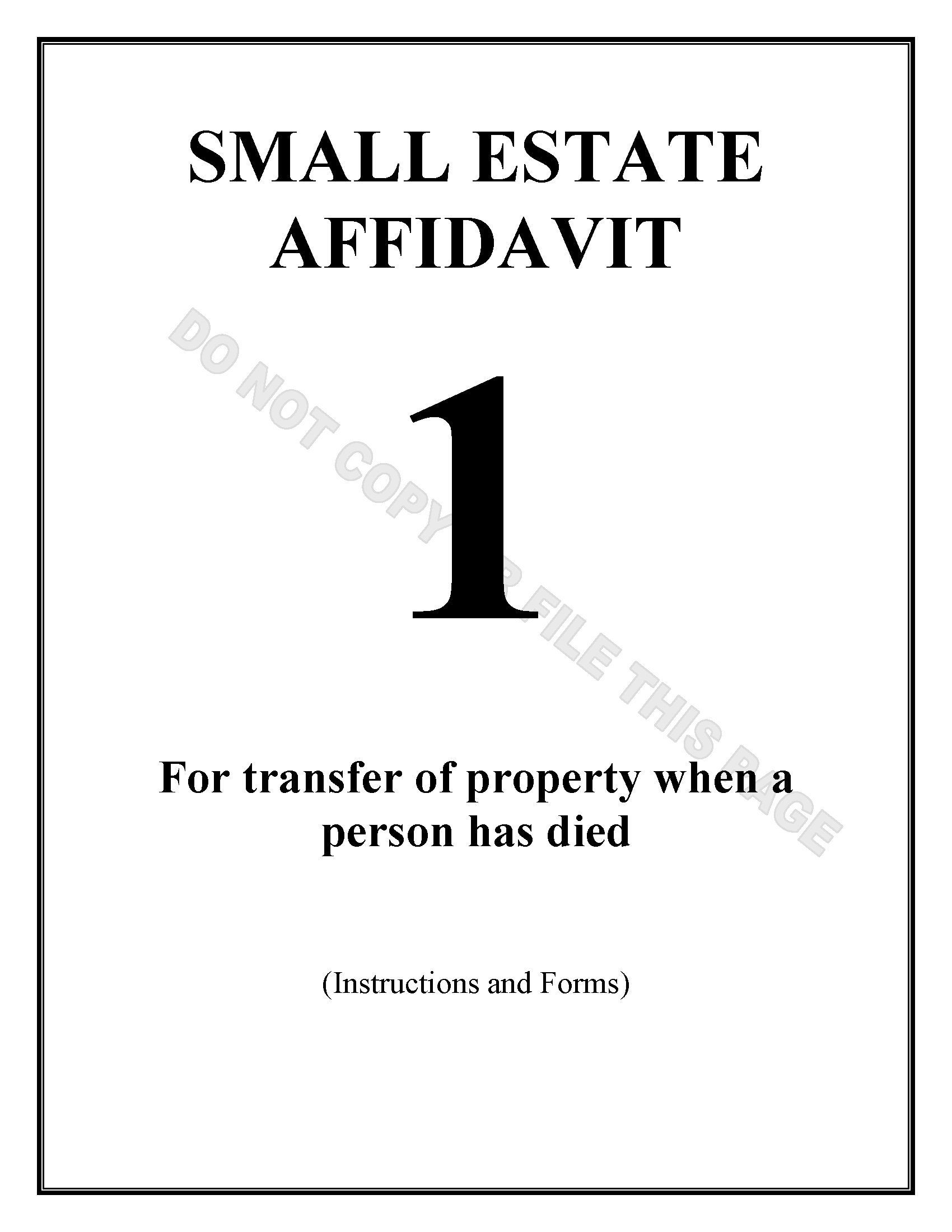Laws
- Statute: Title 14, Chapter 3, Article 12
- Maximum estate value (§ 14-3971(B)(2)(a) & § 14-3971(E)(1)(a)): $75,000 (personal property) | $100,000 (real property)
- Mandatory waiting period (§ 14-3971(B)(1) & § 14-3971(E)): Thirty (30) days (personal property) | Six (6) months (real property)
- Where to file: With the Superior Court Probate Registrar. The affidavit for personal property does not need to be filed.
How to File (4 Steps)
- Step 1 – Requirements
- Step 2 – Complete Necessary Forms
- Step 3 – File Forms (If Applicable)
- Step 4 – Collect Property
Step 1 – Requirements
Before completing and filing a small estate affidavit, a successor must make sure they are qualified to transfer the property and that the estate meets the necessary requirements. The following must apply:
- The value of all personal property in the estate does not exceed $75,000.
- The value of all real property in the estate does not exceed $100,000.
- Thirty (30) days have passed since the decedent’s death (applicable if successor wishes to transfer personal property).
- Six (6) months have passed since the decedent’s death (applicable if successor wishes to transfer real property).
- The successor is entitled to the property because they are named in the decedent’s will OR there is no will and they are related to the decedent.
- A petition for the appointment of a personal representative is not pending or has not been granted (or they have been discharged or it has been a year since a closing statement was filed).
- Funeral expenses, last illness expenses, and all unsecured debts of the decedent have been paid.
Step 2 – Complete Necessary Forms
The Small Estate Affidavit form packet contains all the documents and instructions for a successor to claim an interest in real and/or personal property. If the successor wishes to claim only personal property, they need only complete pages 5-7 of the packet (the Affidavit for Collection of Personal Property). It is not required that they file this affidavit with the probate court. However, those who intend to claim an interest in both real and personal property will need to complete all forms (or, if claiming only real property, all forms except pages 5-7) and file them with the probate registrar (see Step 3).
Step 3 – File Forms (If Applicable)
If the successor is claiming an interest in real property, they will have to complete the appropriate forms in the small estate affidavit packet and file them with the probate court. They can accomplish this by handing over all the forms as well as a copy of the original will and a certified death certificate to the probate registrar at one of the County Superior Court locations. A certified copy of the affidavit will be provided by the Registrar. Successors attempting to claim personal property can skip this step.
Step 4 – Collect Property
To claim interest in personal property, the successor can take the affidavit to the person/entity currently holding the property (they might demand a copy of the will, if applicable, and a copy of the death certificate). To transfer real property, the successor must take the certified copy of the affidavit and record it with the county recorder in the county where the property is located. This will transfer the title of the property to the successor.

